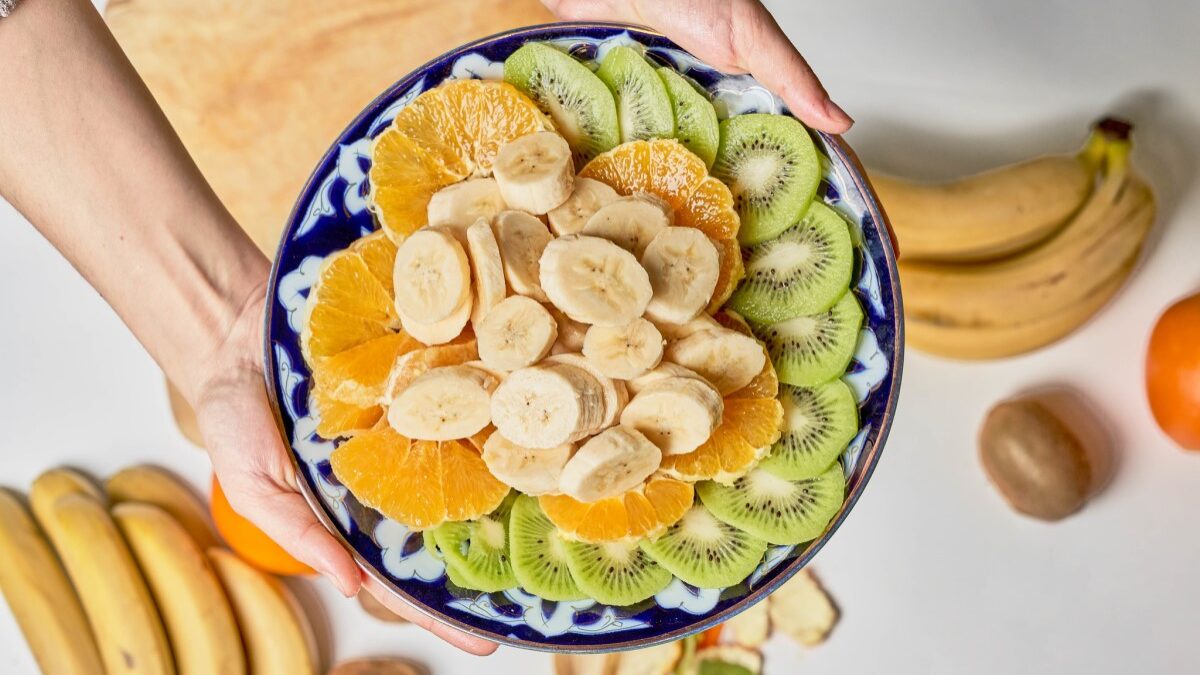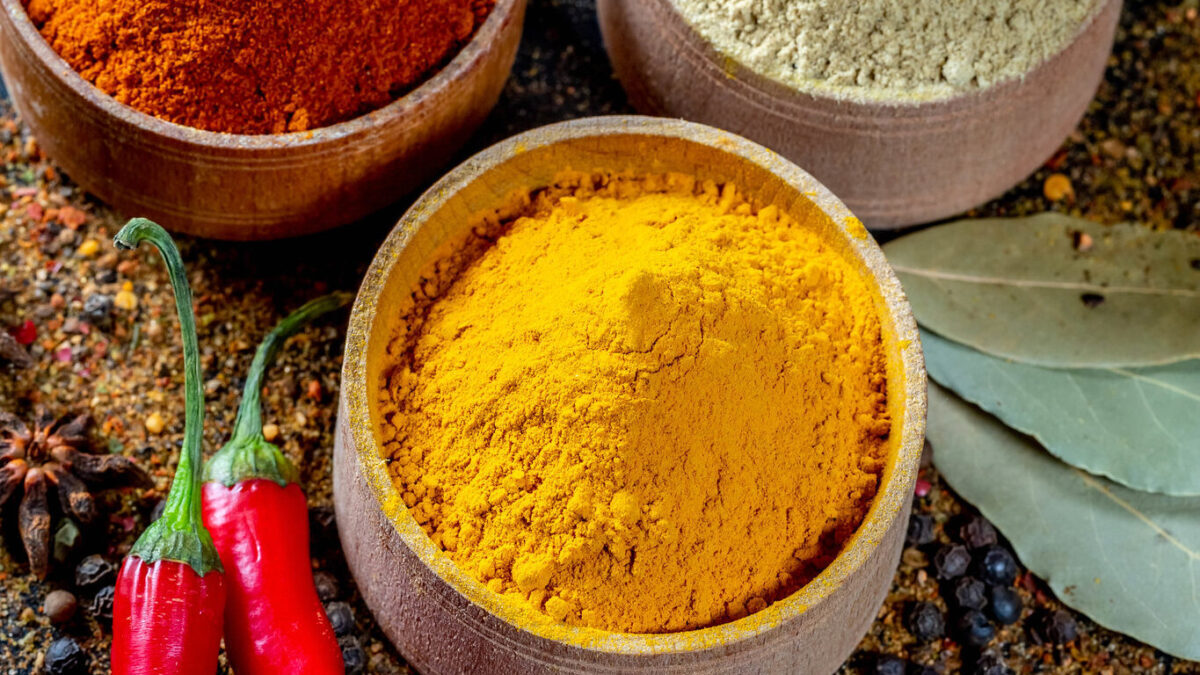
When I was small, I believed childhood was a unique period in life, because it was the only time humans were permitted to eat delicious food without guilt. I had no problem relishing a slice of juicy bacon or a scrumptious piece of chocolate cake, but it seemed to me that adults were far more conflicted about delicious food. One day, I sadly assumed, I would be forced to enter the world of diets and self-imposed hunger, and tally up fat grams in Weight Watchers books. It was a melancholy subject for reflection.
I can remember with that eerie, very-old-memory clarity an overheard conversation that perfectly makes the point. My mother was having a get-together with her friends, and I was somewhere in the vicinity, quietly listening as children do. The women were discussing their diets (they were always on diets) and debating some new study that was just out, and more broadly, the extent to which one should trust dietary studies.
“I’m waiting,” my mother joked, “for the study that explains how butter is healthier for you than margarine.”
“Yes,” her friend countered, “and the one about how we need red meat in our diet. And eggs! Every day for breakfast!”
“Full-fat dairy for everyone!” threw in the third friend, and at this point they were all laughing at the absurdity. Meanwhile, from my quiet corner, I reflected sadly on the grim times that lay ahead, when tastiness would be outlawed, or at least accompanied by crushing guilt.
I am now older than my mother and her friends at the time of that conversation. But I’ve never in my life been on a low-calorie diet, and I shamelessly eat delicious things all the time. If anything, I love food more than ever, and my weight and cholesterol levels are perfectly healthy. The phantasm of an un-yummy adult dystopia has been thoroughly dispelled. I see a lifetime of food enjoyment stretching out ahead.
Partly I can thank my father, who bequeathed to me an enviable metabolism. More importantly, I can thank my husband (who is healthy and handsome without the enviable metabolism) and a society that, at least in this one area, came to its senses. People used to get a lot of terrible advice about dieting. I remember women going around hungry most of the time, barely keeping themselves going with a daily bagel and container of granola. They somehow thought this was healthy. Thankfully, we got past that craziness in time to spare my generation.
My mother’s friends must have wished on some really lucky stars, because all of their wishes have come true. Good food, we now understand, actually is good for you. It is healthy to butter your bread, eat eggs for breakfast and enjoy the occasional medium-rare rib-eye. My family, accordingly, embraces good nutritional science by eating like kings. Actually, scratch that. I’m confident we eat far better than most historical kings.
America: Land of Milk, Honey, and Pop Tarts
Why then do we hear so much about obesity and heart disease and a thousand other health disasters that are constantly bearing down upon us? Some of it just relates to the fact that manufactured health crises sell newspapers. But a lot of it comes back to our reliance on processed food. Delicious, healthy food is out there, but many of us aren’t eating it, mainly because the processed kind is cheaper and more convenient, and because we don’t know how to cook.
As slow-food advocates go, I’m not obsessive. My kids are familiar with fruit snacks and Kraft mac-and-cheese. Michael Pollan has his charms, but don’t let him fool you with his idiot-savant persona. He has multiple best-selling books and only one child to feed. Reading his books, it becomes obvious that he does not understand that, for a harried mom of three, a McDonalds drive-thru can be an absolute life-saver. There are days when French fries are, in fact, a desperate necessity.
Sometimes they aren’t, though. And while I’m not bothered that Pop Tarts exist (even though I personally find them gross), I think it’s borderline tragic how people are reduced to processed-food peonage by their lack of culinary knowledge. I don’t say that out of high-minded moralism. It’s just sad to think of how much they’re missing. In so many ways we live in a depraved, modernist hell-hole, and yet the food is just absolutely incredible. Or can be, if you know how to take advantage.
You owe it to yourself to enjoy this very bright spot in our depraved modern landscape. And so, having myself wandered the deserts of Processed Food-dom, I am here to liberate you by providing a map to the nearest oasis.
The Road to Processed Food Land
Like so many young couples, my husband and I started our marriage with a substantial stock of frozen pizzas and other grim “just reheat” offerings. I used to be very familiar with the freezer section of our local Sam’s Club. We consumed heinous quantities of sodium and other preservatives in dishes that didn’t even taste good.
That’s not to say that I never cooked. Actually I had done quite a lot of cooking in my single days. My mother taught me to find my way around a kitchen, more or less; at any rate I could tell a whisk from a potato masher. Through college graduation I got my meals either from her table or from a cafeteria, but then I joined the Peace Corps, where I spent countless hours in the kitchen cooking things from scratch. That was the only way to get a decent meal in Andijan, Uzbekistan.
Equipment-wise, my Uzbek kitchen was not impressive. I had one very large and solid aluminum skillet, which served as skillet, saucepan, cookie sheet, griddle, and cake pan all in one. Gas for the stove was irregular, and I cooked many meals over an electric hotplate so primitive that I wore gloves and used wooden implements to avoid getting electric shocks.
Ingredient-wise, though, Uzbekistan offered some wonderful opportunities. The Ferghana Valley, where I was stationed, is sort of like the Asian equivalent of California’s Central Valley. It’s fertile. Our winter could get a little one-note (wrinkly potatoes, yum), but in the growing season our bazaar was filled with incredible fresh produce, at prices so cheap that I pretty much thought of it as free. I ate all the cherries and melons I could hold, and spent long, happy afternoons making delicious sauces from fresh-picked tomatoes that cost me perhaps two or three cents a pound. (That experience was so joyful that, years later, I started growing my own tomatoes to recapture the high. There’s something positively decadent about diving into a basket of tomatoes so fresh that they make your kitchen smell like the tomato patch.)
It would be fair to say, then, that I had a real foundation for food appreciation. Back in the States, though, I encountered setbacks. Cooking the way I had in Uzbekistan (with mountains of fresh, beautiful produce) was prohibitively expensive. And nothing tasted the same; the grocery store offerings looked gorgeous on the shelf, but the final product was always disappointing. Without that final payoff, it was hard to motivate myself to cook, and easier to settle for busy grad student fixes, like the baked potato topped with canned chili.
Once I started cooking for two, there was a new complication: he wanted meat. In Uzbekistan I got used to cooking vegetarian, not for principled reasons, but just because I had no reliable refrigeration. My husband wasn’t too excited about that, but he was happy to settle for a frozen “meat-lover’s” pizza. So we kept ourselves alive through some combination of simple home-cooked meals, frozen foods, and eating out. The overwhelming majority of shopping, cooking, and clean-up fell to me, which provided a great incentive to decide that if a frozen pot pie was good enough for him, it was good enough for me too.
Capitalism is so ready to offer us these convenient fixes. Microwave dinners. Instant rice packets. Fast food. We humans get hungry so very often, and who wants to spend their whole life in the kitchen? As a busy mom, I’m sympathetic to the need, occasionally, to punt on dinner. (Trader Joe’s!) What bothers me is how these solutions can get us into a culinary (and nutritional) rut.
I fell into this trap even though, at the time of my marriage, I had probably logged far more hours in the kitchen than most modern brides. I did know something about cooking, but I was intimidated by the meat factor and my husband was far more particular than I had ever been about having his meals ready at some reasonable hour. (As a single woman I had no problem with the Spanish-style 10:30 p.m. dinner, but he seemed to think we should eat before 8.) In the Peace Corps it seemed really exciting to serve up a meal that reminded us Americans of home, but at home that magic was gone. Instead of pushing my skills to the next level, it was just easier to relax into the waiting arms of the Processed Food Fairies, who happily assured me that all Americans eat Stouffer’s lasagna once a week. And anyway, don’t you have a dissertation to write?
The Road Back
Once your habits are settled it can be hard to change them. But sometimes life throws you a curveball that forces you to mix it up. For us, that was becoming homeowners, and having a baby. (Those two events, as it happened, were separated by just a few weeks.)
The house mattered because the kitchen, when we bought it, was in an appalling state. So when we put in our offer, we budgeted for a remodel. When you watch a sparkling new kitchen going in, all according to your tastes and specifications, you get more excited about cooking in it. That planted a seed.
The baby, of course, changed our lives completely, but one change was that we no longer found it so fun and exciting to eat out. We didn’t give up on restaurants completely, but where we had once found the meal out to be fun and relaxing, it suddenly became stressful and rushed. (Over time we got better at baby care, and also more comfortable about public breastfeeding, and casual restaurants became fun again. But that’s another story.) I hadn’t quite realized, until that time, how important it was to have something to look forward to, perhaps on a weekend or holiday. If eating out could no longer be that thing, we needed a replacement.
The other thing about the baby was that he got both of us watching a lot more TV, sometimes at very strange hours. While I normally love documentaries and suspense thrillers, I found these to be more than my exhausted-new-mom-at-3 a.m. emotions could handle. Vapid comedies left me feeling like modernity had sucked out my soul. But watching “America’s Test Kitchen” felt like cuddling up in a warm blanket. It was wholesome and informative, and made domesticity feel good and rich and wonderful. Between the two of them, television chefs Christopher Kimball and Alton Brown got me through some challenging new-mom moments.
My husband was undergoing a similar transformation. He would stay with our son while I taught class, and I generally returned to find them watching cooking shows. With an inviting new kitchen just waiting to be used, and us eager for a more-comfortable, restaurant-type experience, the pieces just fell into place. We started cooking together.
Weekends became exciting again as we happily debated what to make. (Mussels? Our first soufflé? A beautiful short-rib braise?) We became familiar with specialty food stores and started acquiring new cooking equipment. Some things came out badly, of course. But an encouraging number came out well, and over time our batting average improved. We started to understand flavor profiles and rules for pairing things. My husband would post pictures of our greatest triumphs to his Facebook page, and people would make snide jokes about how he must look like Santa Claus by this time. The joke was on them. He’d lost 20 pounds.
Just Get Started
If you can just get yourself started (and I realize how hard that can be), you will probably find that learning to cook is easier than ever because there are so many resources nowadays. There are the cooking shows, some of which are extremely educational. After watching Kimball and Co. make something in the Test Kitchen, you feel more empowered to try it. (Cooks Illustrated, Kimball’s magazine, also has very complete and easy-to-follow instructions with every recipe. They warn you about all the possible pitfalls.) If you just want to learn one simple skill, YouTube has your back. I’ve learned how to open a coconut, French a rack of lamb, and spatchcock a Cornish game hen, all from YouTube videos.
Modern cooking equipment is also quite wonderful. If you can scrape together the money, trust yourself enough to buy one or two really good pots or pans. People sometimes tell me, “I don’t think I’m a good enough cook to do justice to an All-Clad skillet or enamel Dutch oven.” They’re looking at it all wrong. Great chefs can make delicious food with a Boy Scout’s mess kit. It’s amateurs who really benefit from good cookware, which gives you a much wider margin of error and helps you avoid ruining food.
Also, cookware isn’t the only thing that helps. Our thermapen, for example, was a splurge, but since acquiring it we almost never overcook meat. It even helps my baked goods to come out perfect every time. I think it was worth that $93 to get hundreds of perfect home-cooked meals.
Once, the fact that we needed dinner every single day had seemed mildly oppressive. So much work! Now I saw this from another angle: if you don’t eat frozen pizzas all the time, you actually have ample calories for your Manchego and candied walnuts. Cut the Fritos and dig into a wonderful eggs Benedict. Humans really eat quite a lot of food, so why not make it good food? The Yummy Principle might not get you all the way to a nutritional diet, but it goes a lot further than most people think. Once you expose yourself to a wide range of tasty foods, I think you generally find that your appetites give you at least some indication of what your body needs.
It’s really amazing how much pleasure a person can derive from food. And we have great cooking equipment, zillions of exotic ingredients, and oodles of helpful information all right at our fingertips. This has to be one of the things I love most about being a modern woman.
But of course, food isn’t just a selfish pleasure. What could be more appropriate for sharing than a wonderful meal? When you make something delicious for your family or friends, it gives you a wholesome, inviting reason to come together, quite literally, around a common table. Food becomes the occasion for conversation and laughter and shared memories. If you haven’t yet discovered this, I urge you to break free of the poverty of microwave burritos and packaged cookies, and discover how much more is out there. In a world full of sorrow, we owe it to ourselves to enjoy the parts that are really good.









